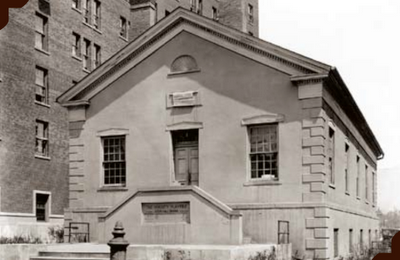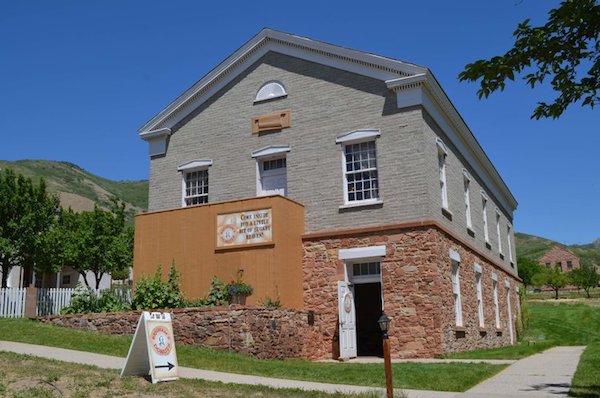Social Hall
The Social Hall was dedicated on New Year’s Day in 1853, only five and a half years after the Mormon pioneers arrived in Salt Lake City, thus reflecting the importance members of The Church of Jesus Christ of Latter-day Saints placed on entertainment that lifted them above the rigors of frontier life.
The Social Hall had the capacity to seat three hundred fifty people, though as many as four hundred people often crowded into it. It was built of plastered adobe walls with native wood floors and roof. The first floor included a dining area with tables, benches, and a fully equipped kitchen; the upper story had a 20 x 40 foot stage and a large dance floor. Dressing rooms were housed in the basement.
The Deseret Dramatic Association conducted many home talent theatricals, musicales, and other festivities in the building. Sessions of the legislature, official meetings, receptions, banquets, and other social functions were also held. The Mutual Improvement Associations used it as theater, library, and gymnasium.
The orchestra of the Social Hall was directed by Domenico Ballo, formerly bandmaster at West Point. Smaller towns in the territory soon began to emulate the activities of the Social Hall.
With the arrival of Johnston’s Army in 1857, activities at the Social Hall ceased. In 1922 the Social Hall was razed.
In June 1933 the MIA and the Utah Pioneer Trails and Landmarks Association erected a marker on the sidewalk explaining the important contributions the Social Hall made to early cultural life in Salt Lake City. The marker reads, in part: This monument marks the site of the social hall, the first recreation center in the intermountain west. Built by The Church of Jesus Christ of Latter-day Saints under the direction of Brigham Young.
The foundation of the original Social Hall was discovered in 1991 during road construction. Today the Social Hall Museum which preserves these remains and other artifacts is open to the public.
The building was replicated in 1980 in the This Is the Place Heritage Park.

